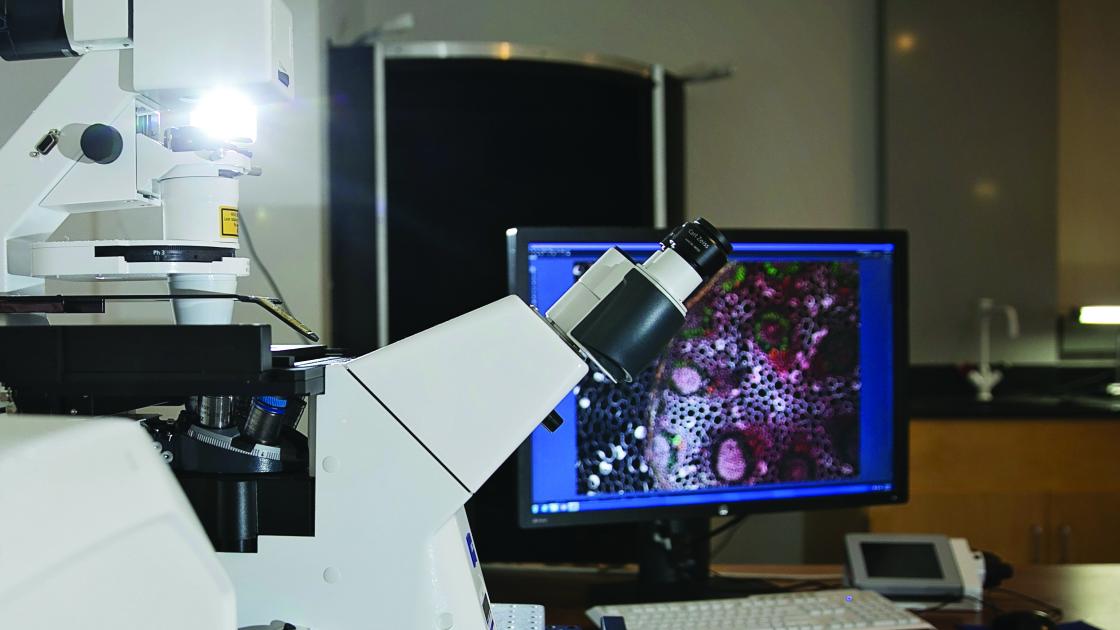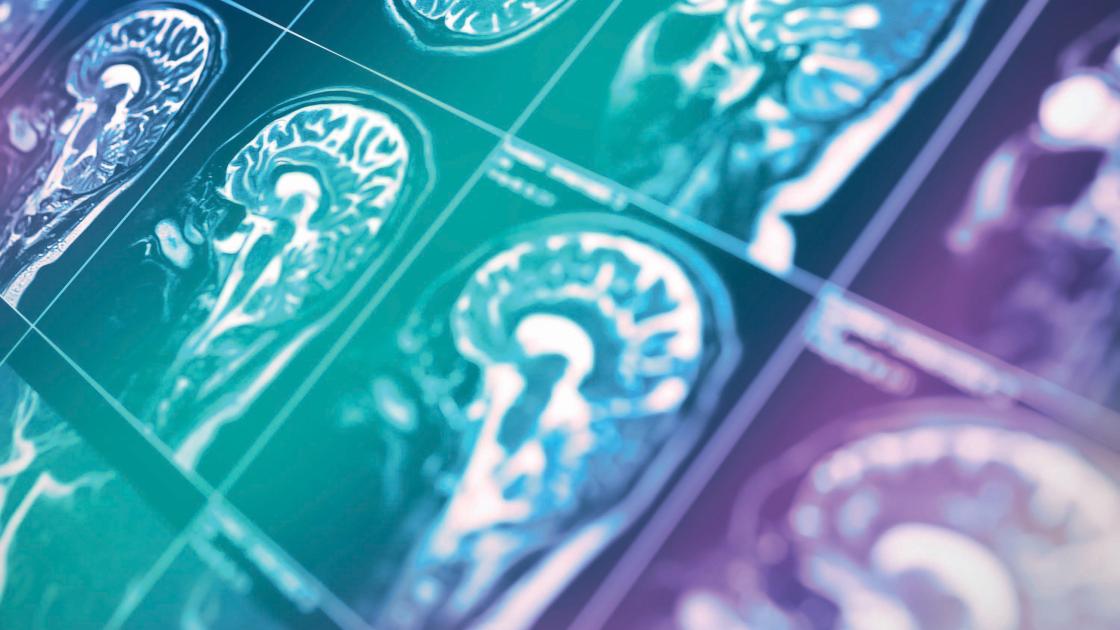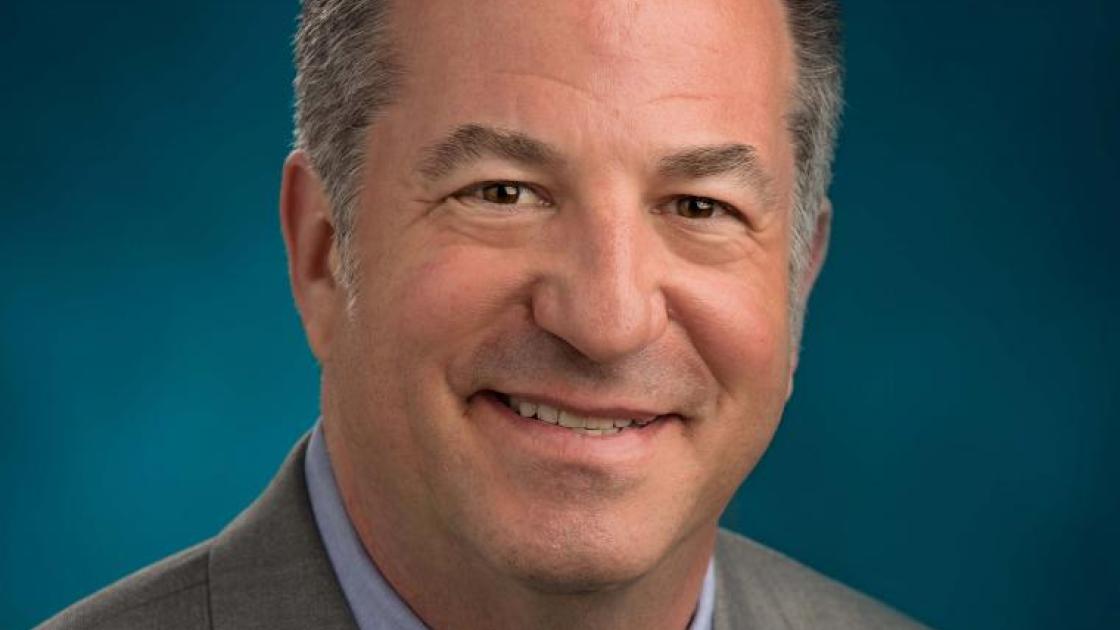
Busy biochemistry lab is mapping virus
A biochemistry laboratory at SIU School of Medicine is sequencing the genomes of SARS-CoV-2 viruses that cause COVID-19 to determine if distinct variants exist in different Illinois communities and specifically in rural versus metropolitan areas.
“We’re looking for the ‘personality’ of the genome, to see how it’s changing over time,” says Keith Gagnon, PhD, assistant professor in the Department of Biochemistry and Molecular Biology. “There are a couple of variants and we need to determine which is the most dangerous. Based on what we learn, we can tell the virus’ point of origin, whether it’s similar to an outbreak in Chicago, or New York or Italy. We can also see if it is mutating, to see if a new version is emerging.”
Gagnon is working in collaboration with the Illinois Department of Public Health to sequence the SARS-CoV-2 virus genome using samples of the virus from Illinois patients who tested positive for COVID-19. The lab will share its information with health officials and deposit it on an international database that already contains more than 20,000 sequences. More are being added each day.
Gagnon says it is becoming apparent how essential the data-sharing is going to be for understanding the pandemic. Vaccine developers will want to target a part of the virus’ code that doesn’t change very often to increase the odds that a vaccine will work for a long time, “that the virus won’t mutate and bypass it. Our data will contribute to the bigger picture to make a better vaccine, better therapeutics.”
The mapping project will inform public policy in Illinois and beyond, he says.
“If a new variant of the virus emerges, we’re going to know quickly. Resources won’t be wasted.”
When the need for genetic testing expertise became apparent this spring, the School of Medicine provided capital to initiate the project in Gagnon’s lab. It was already well-stocked with supplies and more than a dozen students, many of whom were at work on ongoing research studies. The team hopes to map up to 100 genomes a day when in full swing and expects to sequence 1,500-2,000 genomes initially. Staff hours are staggered for safety and to maximize productivity.
Beyond the summer, Gagnon is preparing an R01 grant proposal for the National Institutes of Health (NIH) to support a longer term, three-year longitudinal study of the virus. “We don’t think this is going away soon,” he says. A longitudinal study will continue to track the virus and also provide feedback for the effectiveness of vaccines, treatments, and health mandates.
The lab would have been busy in 2020 even without an international pandemic. The NIH is presently funding four of the laboratory’s research projects, through R01, R21, R15 and R03 grants. Receiving one of those awards is an accomplishment. To obtain all four at the same time “is pretty unusual,” Gagnon says. “I got lucky.”
At the beginning of the year, Gagnon was awarded an R01 grant to characterize and develop anti-CRISPR nucleic acids. CRISPR is a relatively new genetic editing process that uses an enzyme to modify the DNA of a cell. This approach promises to create a new generation of gene therapies. His lab’s goal is to “build better guardrails” to control the activity and specificity of CRISPR. The group has also created molecules to act as “kill switches,” inhibitors that address side effects for specific therapeutic CRISPR applications.
The more recent trio of grants fund three arms of research to investigate cellular mechanisms and therapeutics for a genetic form of amyotrophic lateral sclerosis (ALS), or Lou Gehrig’s disease, known as C9FTD/ALS. Gagnon’s lab is also funded to work on C9FTD/ALS through industry partnerships.
As a post-doc, Gagnon was studying the genetic repeat expansion-disorder Huntington’s disease when a new repeat expansion sequence was discovered that caused ALS. It turned out to be the most common form of genetic mutation that causes Lou Gehrig’s disease. He was awarded a Department of Defense grant to study the anomaly, and it helped establish his lab in Carbondale.
After attending an ALS benefit in Chicago, Gagnon says his work became less of an academic exercise and more of a mission.
“You meet these people and you realize how random and devastating the illness is,” he says. “I thought we should do whatever we can to help them. If we can achieve a fraction of what we want to do, it will all be worth it.”



